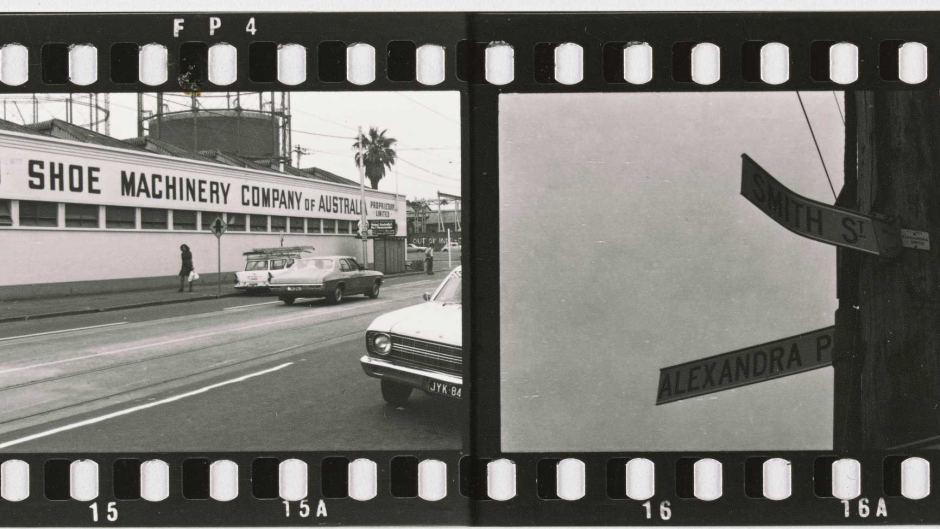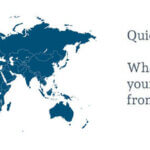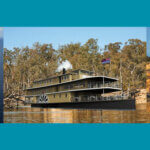| On the 19th of February 1942 an event occurred which changed Australia forever. Australia was bombed by enemy forces at Darwin. Last weekend was the 70th anniversary of the bombing of Darwin. For more details about this event click here.We have assembled a collection of related books. Click on titles below for more details on each.For more military history titles click here |
|
A Very Rude Awakening: The Night the Japanese Subs Came to Sydney Harbour – P. Grose – $32.95 That Sunday night the party came to a shattering halt when three Japanese midget submarines crept into the harbour, past eight electronic indicator loops, six patrolling Royal Australian Navy ships, and an anti-submarine net stretched across the inner harbour entrance. Their arrival triggered a night of mayhem, courage, chaos and high farce, which left 27 sailors dead and a city bewildered. The war, it seemed, was no longer confined to distant desert and jungle. It was right at Australia’s front door. Written at the pace of a thriller and based on new first-person account and previously unpublished official documents, ‘A Very Rude Awakening’ is a ground-breaking and myth-busting look at one of the most extraordinary stories ever told of Australia at war. A War at Home: A Comprehensive Guide to the First Japanese Attacks on Darwin – T. Lewis – $19.95 This momentary misconception was quickly dispelled when the oncoming aircraft began their attack. There were 188 Japanese fighters and bombers in all, and they had been launched from four aircraft carriers a few hours before. Their crews were experienced warriors who had destroyed Pearl Harbor two and an half months earlier. Now, in their Admiral’s words, they’re were the “sledgehammer,to crack an egg”, and their set about their work in deadly earnest. Nine ships were sunk, the defending Kittyhawks were destroyed with one exception, 251 people were killed, and the town of Darwin devastated. An hour later 54 Japanese bombers arrived and struck the airfields. Invasion seemed imminent. This was the beginning of 64 raids made on the Northern Territory in World War II. This comprehensive guide to the war in Northern Australia features: – the background to that initial battle Darwin Bombed: An A/A Gunner’s Reflections – J. Mulholland – $34.95 The Battery Jack joined spent 14 months training on 3″ and 3.7″ A/A guns. At the same time it assisted with the installation of 12 fixed 3.7″ guns, providing Darwin with an anti aircraft defence of a total of two 3″ and sixteen 3.7″ guns. Then, one morning in February 1942, without waning, the Ack Ack gunners were confronted with an air raid similar to that perpetrated on Pearl Harbour. The raid was the first attack on Australia by a foreign power and it caused major damage to installations and ships and resulted in many casualties. This updated edition of Jack’s controversial autobiography presents the unofficial history of the 14th Heavy Anti Aircraft Battery in Darwin. The Battery was the first army unit to engage the Japanese when they attacked Australia. It details the way ordinary people coped with the hardships of life in the tropical north and how they reacted under fire. The reader will find an eye-witness account of the first enemy raid and a description of the reaction of the gun crews, as well as interesting anecdotes of general life in Darwin in 1940-42 and army life in particular. Darwin’s Submarine I-124 – T. Lewis – $38.50 On 20 January 1942, it all went horribly wrong. Sunk with all hands, the submarine I-124 remains outside Darwin today, testimony to bravery but also to folly. Avonmore Books’ new edition of a 1990s work features new and improved graphics; a host of photographs, and the complete story of the submarine action, and events through the decades beyond – for the sunken vessel did not lie easy. Code seekers; treasure hunters; and potential salvors eventually led to the formation of the Historic Shipwrecks Act.
|
|
1942: Australia’s Greatest Peril – B. Wurth – $34.95 On the beautiful Inland Sea of Japan – the heartland of the Imperial Japanese Navy – and in frenetic wartime Tokyo, radical and passionate staff officers and their illogical admirals debated the invasion of an almost defenceless nation. The Imperial Japanese Army, meanwhile, opposed the attack, foreseeing a looming military quagmire. Behind the scenes, Australian, British and American defence chiefs all but dismissed the chances of holding Darwin and the north. Australia’s fate hung in the balance. ‘1942’ is a story of desperate bravery and criminal stupidity. Most of all, it is the story of Australians left high and dry in those first few months of 1942, under the looming shadow of invasion, and the steps that an inexperienced leader, John Curtin, took to help save his country from its darkest days. An Awkward Truth: The Bombing of Darwin February 1942 – P. Grose – $24.95 The raid led to the worst death toll from any event in Australia. The attackers bombed and strafed three hospitals, flattened shops, offices and the police barracks, shattered the Post Office and communications centre, wrecked Government House, and left the harbour and airfields burning and ruined. The people of Darwin abandoned their town, leaving it to looters, a few anti-aircraft batteries and a handful of dogged defenders with single-shot .303 rifles. Yet the story has remained in the shadows. Drawing on long-hidden documents and first-person accounts, Peter Grose tells what really happened and takes us into the lives of the people who were there. There was much to be proud of in Darwin that day: courage, mateship, determination and improvisation. But the dark side of the story involves looting, desertion and a calamitous failure of leadership. Australians ran away because they did not know what else to do. Absorbing, spirited and fast-paced, An Awkward Truth is a compelling and revealing story of the day war really came to Australia, and the motley bunch of soldiers and civilians who were left to defend the nation. Darwin Dilemmas – R. Brown & P. Clift – $22.00 Great humanitarians come to the fore, Australian Royalty, not by lineage, but by merit. Mary Durack was right to name some ‘Kings in Grass Castles’, but royalty was found elsewhere, particularly in the medical fraternity. Men like Clyde Fenton and women like Eileen Fitzer, dubbed the ‘Queen of Pine Creek’. Once again that intrepid policeman ‘Brownie’ invites you to ‘Come along with me to witness those tragic days, cry or laugh as you may, but relive the history that still lies within our grasp. Especially that relatively short, but pungently vital role that Darwin played in Keeping Australians free’. Invading Australia: Japan and the Battle for Australia 1942 – P. Stanley – $35.00 Each year, more and more Australians celebrate Anzac Day and honour the lives of those who fought for their country. There is even a push to create a new public holiday, in remembrance and celebration of the ‘Battle for Australia’. But was there ever really such a battle, and how close did Australia actually come to being invaded? ‘Invading Australia’ provides a comprehensive, thorough and well-argued examination of these and other pertinent questions. Peter Stanley writes compellingly about Australian attitudes to Japan before, during and after World War II, and uses archival sources to discuss Japan’s war plans early in 1942. He also shows that rather than a ‘Battle for Australia’ there was a worldwide fight for freedom and democracy that has allowed the West to enjoy great prosperity in the decades since 1945. |
Japanese Submarine Raiders 1942: A Maritime Mystery – S. Carruthers – $29.95
Just over three months after the surprise air raid over Darwin in 1942, Australians were once again shaken when the Japanese launched a surprise midget submarine attack on Sydney Harbour, the heart of Australia’s premier city. It occurred at a time when Japan’s Imperial Army was advancing on Port Moresby, and three weeks after the Battle of the Coral Sea. The Japanese greatly valued surprise. It had devastated Pearl Harbor and they expected similar unpreparedness when they launched their submarines into crowded Sydney Harbour, which then contained over 40 ships of war from all the Allies Navies fighting in the Pacific.
This book presents new information about the Sydney Harbour attack, the shelling of Sydney and Newcastle a week later, and the large-scale submarine campaign to terrorise and destroy commercial shipping off the east coast of Australia. It also explores the role of censorship, which allowed the government of the day to cover up peculiarities in defence conduct, and even Australian casualties. It is now evident that military secrecy and government censorship was a major factor why few details about the attack emerged until many years after the war. Had their been an official investigation, it would have revealed serious flaws in the harbour defences, as well as the failure of some personnel; it also would have revealed the gallantry of many Australian defenders.
Since the Sydney Harbour raid, the whereabouts of one midget submarine has become one of Australia’s greatest mysteries. ‘Japanese Submarine Raiders: A Maritime Mystery’, explores the many theories to its location.
Raids on Australia: 1942 and Japan’s Plans for Australia – P. Oliver – $44.00
In 1942 many Australians believed the invasion of Australia was imminent, and only the heroism of the Australian soldiers at Milne Bay and Kokoda saved the nation from Japanese occupation.
We now know that Japan had decided not to invade long before the raids on Darwin and Sydney and the struggle for New Guinea.
This book explains the reasons Japan had for making no attempt at invasion, and what its intentions were for Australia, should New Guinea be occupied.
Together Up There: Unit History of 549 RAF/RAAF Fighter Squadron in Northern Australia During World War II – V. Posse – $30.00
The author writes in the Prologue: ‘… this is the story of 549 Squadron RAF, which was formed on Queensland on 15 December 1943 and disbanded in September 1945. My cousin W/Off Ronald (Ron) Walter Posse, was a member of the Squadron from its formation until his untimely and tragic death in a flying accident in the far north of Western Australia on 16 November 1944.
However the story does no end there, thanks to one of Ron’s fellow pilots in 549 Squadron (and survivor of the flying accident) W/Off Leslie (Les) Charles Bushell, he has provided the much finer detail that has gone into this book.
‘Together Up There’ represents the end result of information. Consisting of an anthology of photographs, memoirs, newspaper clippings, maps, documents and not least – eyewitness accounts, this really is the history for everyone with connections to the 549 Squadron RAF, or all military entusiasts.
Wounded Eagle: The Bombing of Darwin and Australia’s Air Defence Scandal – P. Ewer – $29.95
At 0937 on 19 February 1942, the Royal Australian Air Force received its first warning that the Japanese were on their way to bomb an Australian target. Wing Commander Sturt de Burgh Griffith, the station commander at RAAF Darwin, too a message, relayed from the radio station at the Aboriginal mission on Bathurst Island, that a large formation of aircraft was overhead.
The planes went on to bomb Darwin killing innocent civilians, women and children. Others flew unopposed over Sydney and Melbourne, attacking Broome and smashing Australian air units deployed in Malaya, Singapore and what was then the Netherland East Indies (Indonesia). Why were these planes not shot down.
Based on unparalleled archival research in Australia and the United Kingdom, ‘Wounded Eagle’ completely rewrites the early war history of the RAAF. This devastating expose shows how Australia was left defenceless by a clique of conservative politicians, including former Prime Minister Robert Menzies, who took decisions that left Australia without an air defence system in our greatest hour of need.




















